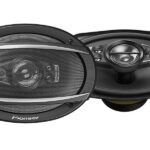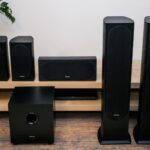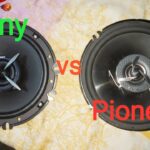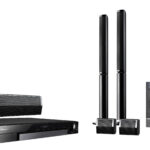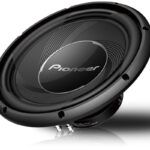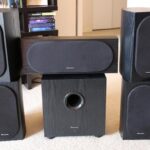Bookshelf speakers do not necessarily need a subwoofer, but adding one can enhance the overall sound experience. With a subwoofer, the lower frequencies are reproduced more accurately, providing a fuller and richer sound.
Incorporating a subwoofer can improve the bass response and increase the depth and impact of the audio. It is important to consider the size of your room, personal preference for bass, and the type of music or movies you enjoy when deciding whether to add a subwoofer to your bookshelf speaker setup.
A well-tuned subwoofer can complement bookshelf speakers by filling in the lower frequencies that they may not be able to reproduce as effectively, resulting in a more balanced and immersive audio experience.
Why Bookshelf Speakers Alone May Not Be Enough
Bookshelf speakers are known for their compact size and ability to produce high-quality audio. However, when it comes to bass response, they have limitations. These speakers may not provide the deep, powerful low-frequency sounds that a subwoofer can deliver.
Without a subwoofer, the audio experience from bookshelf speakers alone may be incomplete. The limited bass response can result in a lack of depth and impact in music, movies, and other multimedia content. The absence of low-end frequencies can be especially noticeable when listening to genres that heavily rely on bass, such as electronic or hip-hop.
Adding a subwoofer to your setup can greatly enhance the overall sound quality. A subwoofer fills in the lower frequency range, giving you a more balanced and immersive listening experience. It brings out the richness, depth, and fullness of the audio, ensuring that you don’t miss out on the full spectrum of sounds.
In conclusion, while bookshelf speakers are excellent for mid and high-range frequencies, they may benefit from the addition of a subwoofer to provide a more complete and satisfying audio experience.
Benefits Of Adding A Subwoofer To Bookshelf Speakers
By incorporating a subwoofer to your bookshelf speakers, you can significantly enhance the low-frequency performance. **The addition of a subwoofer ensures a fuller and richer sound**, as it takes over the responsibility of producing bass frequencies, allowing the bookshelf speakers to focus on mid and high ranges. With a subwoofer, **you can enjoy a more immersive audio experience**, as it adds depth and dimension to your sound system.
Factors To Consider Before Adding A Subwoofer
Adding a subwoofer to your bookshelf speakers can enhance your audio experience, but several factors should be considered before making a decision. The size of your room and its acoustics play a crucial role in determining whether a subwoofer is necessary. A larger room may benefit from the additional bass response provided by a subwoofer, while a smaller room might not require one. Proper speaker placement is also vital to achieve optimal sound quality. Experiment with different positions to find the sweet spot where the bookshelf speakers perform best. Additionally, personal audio preferences come into play. Some individuals enjoy a more prominent bass presence, while others prefer a more balanced sound. Ultimately, the decision to add a subwoofer depends on these factors and your personal preferences. Consider these aspects to determine if a subwoofer would enhance the performance of your bookshelf speakers.
Selecting The Right Subwoofer For Your Bookshelf Speakers
Do Bookshelf Speakers Need a Subwoofer
When considering whether bookshelf speakers need a subwoofer, there are a few factors to take into account. One important consideration is the size and power requirements of the subwoofer. Active subwoofers have a built-in amplifier and are generally a good choice for bookshelf speakers because they offer more control over bass levels. On the other hand, passive subwoofers require an external amplifier, which may limit their compatibility with certain speaker systems.
Power and size are key factors in determining the right subwoofer for bookshelf speakers. It’s important to choose a subwoofer that complements the power output of your bookshelf speakers. Too much power may overpower the speakers, while too little may result in weak bass response. Additionally, the size of the subwoofer should be proportionate to the room and the speakers themselves.
Another crucial consideration is matching the subwoofer with the bookshelf speaker specs. Ensure that the subwoofer’s frequency response range aligns with the speaker’s frequency capabilities to avoid any imbalances in sound reproduction. It’s worth noting that some bookshelf speakers are designed to produce sufficient bass on their own, eliminating the need for a subwoofer.
In summary, selecting a subwoofer for bookshelf speakers involves considering factors such as active vs passive options, power and size requirements, and matching specifications. By accounting for these factors, you can enhance your audio experience and achieve a well-balanced sound system.
Steps To Integrate A Subwoofer With Bookshelf Speakers
Bookshelf speakers are a popular choice for many audio enthusiasts due to their compact size and excellent sound quality. However, for those looking for a deeper and more impactful bass experience, integrating a subwoofer with bookshelf speakers can be a game-changer.
| Connecting the Subwoofer to the Audio System: |
| 1. Make sure the subwoofer and audio system are powered off. |
| 2. Connect the subwoofer’s audio input to the audio system’s preamp output or subwoofer output. |
| 3. Connect the subwoofer’s power cord to a power outlet and turn on the subwoofer. |
Adjusting Crossover Frequencies:
- 1. Set the crossover frequency on the subwoofer to around 80-120 Hz, depending on personal preference.
- 2. Adjust the crossover frequency on the audio system to match the subwoofer’s setting.
Balancing the Subwoofer and Bookshelf Speaker Sound Levels:
- 1. Play a song or movie with both the bookshelf speakers and subwoofer active.
- 2. Gradually increase the subwoofer volume until it complements the bookshelf speakers without overpowering them.
- 3. Fine-tune the sound levels to achieve a balanced and cohesive audio experience.
Common Misconceptions About Subwoofers For Bookshelf Speakers
| Common Misconceptions About Subwoofers for Bookshelf Speakers |
Bookshelf speakers are known for their compact size and excellent sound quality. However, there are some common misconceptions regarding the need for a subwoofer when using bookshelf speakers. Let’s address these misconceptions.
Overwhelming BassMany people believe that adding a subwoofer to bookshelf speakers will result in overwhelming bass. However, this is not necessarily the case. A properly calibrated subwoofer can complement bookshelf speakers by adding depth and richness to the low-frequency sounds without overpowering the overall audio experience.Compatibility IssuesAnother misconception is that subwoofers may not be compatible with bookshelf speakers. In reality, most bookshelf speakers are designed to work seamlessly with subwoofers. Manufacturers often provide specific recommendations and guidelines for integrating subwoofers with their bookshelf speaker models. Combining bookshelf speakers with a subwoofer can enhance the overall audio performance, bringing out the best in both. It’s important to configure and position the subwoofer correctly for optimal sound balance and integration. In summary, while bookshelf speakers on their own provide impressive sound quality, adding a subwoofer can further enhance the listening experience. Subwoofers can provide deeper bass and improve the overall audio balance when properly integrated with bookshelf speakers. |
Alternative Solutions To Enhance Bass Performance
Bookshelf speakers are a popular choice for many audio enthusiasts due to their compact size and excellent audio reproduction. While these speakers offer impressive sound quality, they may sometimes lack the deep bass response that a subwoofer can provide. However, there are alternative solutions to consider before adding a subwoofer to your setup.
One way to enhance the bass performance of your bookshelf speakers is by adjusting the EQ settings. By tweaking the equalization, you can emphasize the low frequencies and bring out the bass more effectively. Additionally, utilizing room correction technology can help overcome room resonances and optimize the overall sound quality.
Another consideration is opting for bass reflex or ported bookshelf speakers. These speakers have a specially designed port or vent that allows for the movement of air, resulting in deeper bass reproduction. This design feature can help compensate for the absence of a subwoofer.
In conclusion, while bookshelf speakers do not necessarily require a subwoofer, there are alternative solutions available to enhance their bass performance. By adjusting EQ settings, utilizing room correction technology, or choosing bass reflex speakers, you can achieve a more satisfying low-end reproduction.
Frequently Asked Questions On Do Bookshelf Speakers Need A Subwoofer
Do Bookshelf Speakers Need A Subwoofer?
Bookshelf speakers do not necessarily need a subwoofer, but adding one can greatly enhance the low-frequency capabilities of your audio system. A subwoofer provides deep bass and adds intensity to your listening experience, especially when watching movies or listening to music genres that heavily rely on bass.
Can Bookshelf Speakers Produce Deep Bass?
Bookshelf speakers are not specifically designed to produce deep bass as they are compact and prioritize overall sound quality. While they can produce decent bass, adding a subwoofer will significantly improve the low-end frequencies and provide a more immersive sound experience, especially for bass-heavy tracks or movies.
What Are The Benefits Of Adding A Subwoofer To Bookshelf Speakers?
Adding a subwoofer to bookshelf speakers enhances the overall sound quality by delivering deep, powerful bass. It creates a more balanced audio experience, enriches the low-end frequencies, and adds depth to the music or movie soundtracks. A subwoofer also takes the load off the bookshelf speakers, allowing them to focus on reproducing mid and high-range frequencies more accurately.
Are There Any Downsides To Using A Subwoofer With Bookshelf Speakers?
Using a subwoofer with bookshelf speakers may add complexity to your audio setup and require additional space. Additionally, improperly calibrated bass levels can result in unbalanced sound, overpowering the other frequencies. However, with proper setup and adjustment, these issues can be easily overcome, ensuring a seamless integration of the subwoofer with your bookshelf speakers.
Conclusion
To sum up, adding a subwoofer to your bookshelf speakers can greatly enhance your audio experience. By filling in the low-frequency gaps, a subwoofer brings depth and richness to your music and movies. This extra bass adds a whole new dimension to sound, making it more immersive and captivating.
So, if you crave a fuller and more powerful sound, investing in a subwoofer is definitely worth considering. Boost your audio setup with a subwoofer and elevate your listening pleasure.

